Deserts through Children's Books
A Literature Based Unit for Grades PreK through 9.
![]()
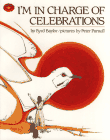
A theme study of the desert offers a chance to pursue the various unique flora and fauna of the dry areas as well as geology and weather. Broadening the theme to a study of the world's deserts allows class exploration of various cultures. We start with a book by Byrd Baylor and, indeed, this whole theme could lead into an author study of Baylor since most of her work is set in the deserts of the American Southwest.
Picture Book for Starters
Byrd Baylor's I'm in Charge of Celebrations (Turtleback, 1999 ISBN 0785783385. Order Info.) Gr 1-9.
A young girl of the desert is asked if she is lonely and she answers with exuberance describing all the natural phenomena of the desert that she celebrates. Each one she describes lyrically and, in the process, we learn not only about the joys of the desert but about celebrating nature in small things and large. Read full book review.
Activities
Language Arts
Writing
In I'm in Charge of Celebrations the narrator lists six celebrations of the desert. Describe one natural event in your area that you could celebrate Byrd Baylor's way.

Read Roxaboxen (see book list below). The children in Roxaboxen use things they find around the desert to build their town. If you were to build a town like that, what natural materials would you find in your area?
The Three Little Javelinas (see book list below) is a desert version of "The Three Little Pigs". After sharing it, use desert creatures and situations to write a desert version of another fairy tale.
How the Jack Rabbit Got His Ears (see book list below) is a pourquoi tale. That means its a fanciful explanation of how something came to be. Read it and then write a pourquoi tale about some other desert animal's special attribute.
Science
List individual animals and plants of the southwest American desert on index cards. Don't forget insects. On each card list some descriptive adjectives. Find out how each of these animals and plants have adapted to life in the desert.
Make a display showing the special features of animals of the desert in sections labeled: Eyes of the Desert, Feet of the Desert, Skin of the Desert and Tongues of the Desert. Show how those features of the animals help them survive in the desert.
Create experiments to determine the effectiveness of some desert coping strategies. Measure the difference in temperature between sunny and shady areas. Measure the difference in temperature between the surface and below surface spots in a pile of sand. Measure the difference between daytime and nighttime temperatures.
(Continued Below)
Advertisement:
Choose an animal of the desert. Make an illustrated flow chart showing its life cycle.
Illustrate the life cycle of any desert animal on a paper plate. Place it on a bulletin board and connect it with colored yarn to a different animal life cycle created by someone else. On the connecting yarn make a label telling how those two animals relate to each other. It can be something like "both are egg-layers" or "this one eats that one". Keep making connections until every animal life cycle is connected.
Visit a plant store or greenhouse or botanical garden that has cacti. Take sketch pads, crayons and pencils to make drawings of what you see. Look for special features that help plants deal with desert conditions: waxy coverings, spines, water storing tissue, and light coloring.
To demonstrate the way animals and plants of the desert conserve water, soak several sponges in water and then squeeze the excess moisture off. Place each of the sponges in a different situation: one uncovered in bright sunlight, one covered with wax paper in bright sunlight, one in shade uncovered, one in a Baggie. Find ways of measuring the amount of moisture left in each sponge after one hour.
How much annual rainfall does a desert get? How much annual rainfall does your area get?
Math
How close to a desert are you? Mark your place and each of the world's deserts on a globe and measure with a tape measure or string. Convert to miles.
Graph the average annual precipitation from random areas around the world. Find the average precipitation in your area and find where it fits in relation to the other areas. Calculate the median, average, and other statistics. How do your random areas compare to world wide average precipitation?
Deserts are a good context in which to talk about water conservation which is important for people as well as for wildlife. For one day keep track of all the water that you use. Work together first to determine ways to estimate the volume when using water. Calculate how much you use in a year. Multiply that by the number of people in your community. Older students can search online to get estimates for the amount of water used in the manufacturing of various products and factor that into their water usage totals.
Social Studies
Find one unique feature of each of the world's deserts. Put pictures of that feature on a map of the world showing the deserts.
Many desert habitats are threatened by human activity. Choose a desert and see what you can find out about the threats it faces and how the local governments and organizations are responding.
Access to clean water is a major issue in many areas of the world. This is especially true in desert areas. Older students can choose an area that has conflicts over water and look into the source of the conflict and possible solutions.
Investigate some of the cultures, past and present, that have developed in desert areas. Some of the books below can help introduce some of these cultures. How has the environment changed these people and how have they changed the environment?
(Continued Below)
Advertisement:
Art
Make sand pictures in bottles. Use food coloring to color the sand or use aquarium sand. Layer it in the bottle. When all the colors are laid down, carefully slide a knitting needle or knife along the sides of the glass to bring some of the colors up or down a bit.
Look at paintings by Georgia O'Keefe who used the desert for inspiration. Use some of the colors she used to make your own desert pictures.
Make a large model of a saguaro cactus using cardboard and paper mache. Use the Cactus Hotel book listed below for the names of animals you can place pictures of in and around the cactus.
Book List
Fiction

The Golden Dream of Carlo Chuchio by Lloyd Alexander. (2007, Holt. ISBN 9780805083330. Order Info.) Novel. 320 pages. Gr 4-7.
Carlo is off to find treasure marked on a map he has discovered in an old book. After crossing a raging sea, Carlo and his lazy camel puller, Baksheesh, along with a young woman, Shira, and a wise man, Salamon, travel the dangerous Road of Golden Dreams through an Arabian Nights style Middle East. The characters and plot are what we would expect from the late master storyteller Lloyd Alexander.
Desert Voices by Byrd Baylor. (1981, Simon & Schuster, 1981 ISBN 0684167123. Order Info.) Picture Book. 32 pages. Gr 1-3.
Each animal of the American southwest desert gets a page in which to tell of its life and place in the ecosystem. Together their voices create a poetic way to learn about the food chains in the desert
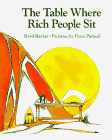
![]() Grades 1 - 12
Grades 1 - 12
The Table Where Rich People Sit by Byrd Baylor. Illustrated by Parnall, Peter. Picture Book. 32 pages.
Find this book: Local Bookstore, Amazon, B&N
A young girl insists that her family gather around their homemade table and discuss money. She says they don't have enough. They meet and make a list of their valuables and find that most are not monetary at all. This is a funny story with a serious message and the idea that money is an arbitrary and usually inadequate value system should be apparent to many readers. Read More.
A Stone in My Hand by Cathryn Clinton. (2010, Candlewick. ISBN 9780763647728. Order Info.) Novel. 208 pages. Gr 7-12.
It's 1988 in a Palestinian community in Gaza City and Malaak has been deeply traumatized by the disappearance of her father during the '88-'89 Intifada. She learns that he was killed in an Islamic terrorist bombing and she must summon great courage to regain her connection to reality, especially when she must confront her brother who has chosen to engage in the violence. Clinton has treated a controversial topic with a compassion and fierce honesty that transcends the taking of sides. Briskly paced, full of well-wrought characters and beautifully written.
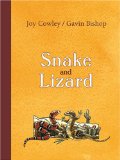
Snake and Lizard by Joy Cowley. Illustrated by Gavin Bishop. (2008, Kane/Miller. ISBN 9781933605838. Order Info.) Chapter Book. 104 pages. Gr PreK-5.
Snake and Lizard live in the Australian desert. This lovely chapter book chronicles their quarrels and their reconciliations. Charming and accessible. Great for reading aloud to the youngest and for independent reading for others.
How Jackrabbit Got His Very Long Ears by Heather Irbinskas. Illustrated by Kenneth Spengler. (1994, Rising Moon Press. ISBN 0873585666. Order Info.) Picture Book. 32 pages. Gr PreK-3.
This is an original pourquoi tale (a story that explains how something came to be) that brings in many desert animals and calls attention to their attributes.
(Continued Below)
Advertisement:

The Green Glass Sea by Ellen Klages. (2008, Puffin. ISBN 9780142411490. Order Info.) Novel. 352 pages. Gr 4-8.
Seen through the eyes of a ten year old girl, this is the story of the early years of the Manhattan Project at Los Alamos National Laboratories in the New Mexican desert where her father works. The development of the atom bomb is a fascinating addition to desert studies which could also lead to discussion of radioactive waste storage in deserts.

The Higher Power of Lucky by Susan Patron. Illustrated by Matt Phelan. (2006, Atheneum. ISBN . Order Info.) 134 pages. Gr 3-6.
Winner of the 2007 Newbery Medal, this book is populated with unforgettable characters and a gentle sense of humor bringing life to the classic plot of an abandoned child trying to find her place in the world. Ten year old Lucky's mother has died and her father has abandoned her. She is living in a trailer with her father's first wife in the town of Hard Pan (population 43) on the edge of the Mohave Desert in California. Lucky has a job cleaning up outside the Found Object Wind Chime Museum where she eavesdrops on twelve step meetings and their discussions of a Higher Power.

Holes by Louis Sachar. (2000, Yearling. ISBN 9780440414803. Order Info.) Novel. 272 pages. Gr 4-9.
Camp Green Lake is neither a camp nor a lake although it once was both. Now it's a barren desert area and a prison camp for delinquent teenage boys. A boy with a palindrome for a name, Stanley Yelnats, was tried and convicted of a crime he did not commit—stealing a basketball hero's shoes—and was given the choice of Camp Green Lake or prison. This is just the latest in a series of misfortunes that have befallen generations of the Yelnats family since being cursed by an old woman in their native country. Read full review with teacher guide links.

Shabanu: Daughter of the Wind by Suzanne Fisher Staples. (2003, Laurel Leaf. ISBN 9780440238560. Order Info.) Novel. 288 pages. Gr 7-12.
In Shabanu's life as part of a nomadic tribe in the Cholistani desert of Pakistan, there are strict rules. A daughter does as her father wishes; a father arranges a suitable marriage for the daughter; a wife obeys her husband; husbands can have many wives. Most of the females Shabanu knows obey these rules, but one, her aunt Sharma, has broken those rules and become an independent woman.
The Three Little Javelinas, Bilingual Edition by Susan Lowell. (2009, Luna Rising. ISBN 0873589556. Order Info.) Picture Book. 32 pages. Gr 3-6.
This is the southwestern version of "The Three Little Pigs" which features a villainous coyote and the three wild pigs of the desert. Nestled in the plot is a good bit of information about the area.
Roxaboxen by Alice McLerran. Illustrated by Barbara Cooney. (1991, HarperCollins. ISBN 0688075924. Order Info.) Picture Book. 32 pages. Gr PreK-3.
Children of the desert construct a village outlined in desert stone and glass and create their own society with strict rules of behavior.
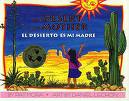
The Desert Is My Mother: El Desierto Es Mi Madre by Pat Mora. Illustrated by Daniel Lechon. (1994, Arte Publico. ISBN 1558851216. Order Info.) Picture Book. 32 pages. Gr PreK-3.
A bilingual text gives us a little girl who feels affinity for the desert in which she lives. The text is playful but contain's a lot of information about desert life and phenomena.
Desert Trip by Barbara A. Steiner. Illustrated by Ronald Himler. (1996, Sierra Club. ISBN 0871565811. Order Info.) Picture Book. 32 pages. Gr PreK-3.
We go with a little girl and her mother as they enjoy a camping trip in the southwestern desert. The mother points out many of the desert plants and, particularly, one beautiful flower.
Nonfiction
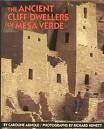
The Ancient Cliff Dwellers of Mesa Verde: A Close Look at the Anasazi by Caroline Arnold. Illustrated by Richard Hewett. (2000, Clarion. ISBN 9780618051496. Order Info.) Picture Book. 64 pages. Gr 3-9.
This is a good nonfictional source for information on the Anasazi Indians who inhabited the mesa tops and then the cliffs of southwestern Colorado and northern Nevada. The illustrations are photographs of the Mesa Verde National Park and include interior and exteriors of the pueblos. The text, which describes life in the early 12th century, is scrupulously accurate.
Like Cactus Hotel but for a slightly older audience, this picture book explains the function of the saguaro cactus in the southwestern desert. Even as the large plant dies and decomposes, it becomes food for insects and scorpions.
The Desert Is Theirs by Byrd Baylor. (2007, Aladdin> ISBN 143520736X. Order Info.) Picture Book. 32 pages. Grades PreK-3.
This is a book in praise of the desert and the people as well as the animals that have adapted to its rugged environment. The Papago Indians know the desert's beauty and its secrets.
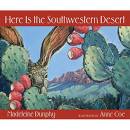
Here is the Southwestern Desert by Madeleine Dunphy. Illustrated by Anne Coe. (1995, Hyperion. ISBN 9780977379569. Order Info.) Picture Book. 32 pages. Gr PreK-5.
In a "This is the House That Jack Built" style rhyming chant we see the food chain of desert animals. The illustrations are quite beautiful.
Desert Birds by Alice K. Flanagan. (1996, Children's Press. ISBN 0516200747. Order Info.) Picture Book. 48 pages. Gr PreK-3.
Color photographs illustrate a book about birds in the world's deserts -- including polar deserts.
One Day in the Desert by Jean Craighead George. (1983, HarperCollins. ISBN 0690043414. Order Info.) Nonfiction. 48 pages. Gr 3-6.
We spend a hot July day in the Sonoran Desert of Arizona observing the mechanisms plants and animals use to stay cool and following a wounded mountain lion who must get to water to survive.
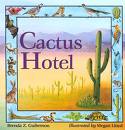
Cactus Hotel by Brenda Guiberson. (1991, Holt. ISBN 0805029605. Order Info.) Picture Book. 32 pages. Gr PreK-3.
A saguaro cactus is an ecosystem within the desert ecosystem. This book shows how each thing that happens to the cactus starts a chain of events affecting many animals and plants in and around it.
Desert Mammals by Elaine Landau. (1997, Children's Press. ISBN 0516260979. Order Info. Nonfiction. 48 pages. Gr 3-6.
Mammals in deserts around the world are shown in color photographs with clear, easy to read text.
Storm on the Desert by Carolyn Lesser. (1997, Harcourt. ISBN 0152721983. Order Info. Picture Book. 40 pages. Gr PreK-4.
There are many books about the desert but this is the only one I know of that deals with a desert storm and its effects on the wildlife.
![]()
Related Areas of Carol Hurst's Children's Literature Site
- Byrd Baylor Author Study with biography, activities, related books and links.
- Geology through kids' books. Featured subject with activities, books and links.
- Weather through kids' books. Featured subject with activities, books and links.
- Other Themes and Topics through Kids' Books. Links to more articles.

